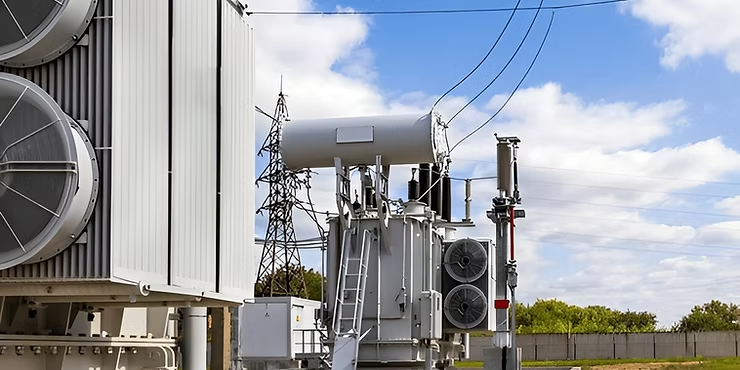When it comes to ensuring the reliability and longevity of a power transformer, one of the most critical—but often overlooked—factors is the cooling system. Proper cooling not only prevents overheating but also plays a major role in reducing downtime, extending service life, and minimizing the risk of failure. If you’re serious about power transformer maintenance, understanding and choosing the right cooling method is essential.
In this blog, we’ll explore the different types of transformer cooling systems, factors to consider when choosing the right one, and how cooling impacts transformer health over time.
Why Cooling Matters in Power Transformer Maintenance
Transformers operate continuously and often handle high voltages and currents. This generates heat, particularly in the windings and core. If the heat isn’t managed properly, it can degrade insulation, damage components, and reduce transformer efficiency.
Effective cooling is not optional—it’s a core part of power transformer maintenance that can prevent:
- Overheating and breakdowns
- Insulation degradation
- Oil oxidation and contamination
- Costly unplanned outages
Whether you own new equipment or used transformers, proper cooling selection and servicing will extend equipment life and performance.
Types of Transformer Cooling Systems
Choosing the right cooling method depends on your transformer’s size, location, load, and maintenance capabilities. Here are the most common types:
1. ONAN (Oil Natural Air Natural)
This passive system relies on natural convection:
- Oil circulates internally, absorbing heat from the windings.
- The heated oil rises and releases heat through the radiator fins.
- Air cools the external radiator surfaces.
Best for: Smaller power transformers or those operating at steady loads.
2. ONAF (Oil Natural Air Forced)
Similar to ONAN, but includes fans that force air across the radiators to improve cooling.
Best for: Medium to large transformers with variable or high loads.
3. OFAF (Oil Forced Air Forced)
In this system, oil is pumped through the core and coils, then cooled by air forced over radiators. It’s highly efficient and used in high-load scenarios.
Best for: Large power transformers under heavy or fluctuating loads.
4. OFWF (Oil Forced Water Forced)
A water-based system where heat from oil is transferred to water in a heat exchanger. Water is then cooled using chillers or cooling towers.
Best for: Indoor installations, marine, or where air cooling isn’t practical.
Need help assessing your current system? Explore our transformer services for expert maintenance, cooling system upgrades, and diagnostics.
Factors to Consider When Choosing a Cooling System
1. Transformer Load Profile
Transformers running near full capacity or with fluctuating loads need more robust cooling systems. Passive systems like ONAN may not be sufficient for peak demand.
2. Ambient Temperature
Outdoor units in hot climates will require more aggressive cooling systems than those in mild or controlled environments. This is especially important in regions like California—check out our specialized transformers in California for climate-specific solutions.
3. Space Constraints
Compact or indoor installations may not allow for air-cooled radiators. In such cases, liquid or water-based cooling is more efficient and space-saving.
4. Energy Efficiency
Some cooling systems consume more energy than others. Forced systems (using pumps and fans) increase operational cost but offer better performance and reliability under load.
5. Maintenance Capabilities
More complex systems (like OFAF or OFWF) require regular checks and servicing. If you don’t have a dedicated team, opt for a simpler, low-maintenance system.
Need professional guidance? Our team can evaluate your transformer’s condition and recommend the right system as part of our power transformer maintenance packages.
How Cooling Systems Affect Transformer Longevity
A poorly chosen or maintained cooling system can cause overheating, even if the transformer is lightly loaded. Over time, this leads to:
- Thermal aging of insulation
- Breakdown of oil (oxidation, sludge formation)
- Uneven stress on windings
- Reduced dielectric strength
Even if you’re working with surplus transformers, upgrading the cooling system can restore much of their original value and performance.
Maintenance Tips for Transformer Cooling Systems
Proper care is part of any comprehensive power transformer maintenance routine. Here are key tips:
- Inspect radiator fins and fans regularly
- Check oil levels and quality through sampling and analysis
- Clean and tighten electrical connections on fans and pumps
- Test temperature alarms and thermal relays
- Flush heat exchangers periodically (for water-cooled systems)
If you’re unsure where to start, our experienced team offers routine servicing and emergency support for used transformers for sale near me and custom installations.
When to Consider Upgrading or Replacing Cooling Systems
If your transformer is experiencing higher-than-normal operating temperatures, it’s time to assess the cooling system. You should also consider upgrades if:
- Your system operates near full load frequently
- You’ve noticed increased oil degradation
- The fans or pumps are aging or unreliable
- You’ve acquired older or buy used transformers
We can help with system redesigns and even sell used transformers that are refurbished with improved cooling technology.
Final Thoughts
The right cooling system is more than a technical requirement—it’s a strategic choice that can save money, boost efficiency, and extend the life of your electrical infrastructure. Whether you’re overseeing an industrial plant, utility station, or managing used transformers, prioritizing cooling as part of your power transformer maintenance plan is a smart investment.



